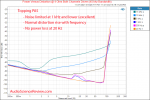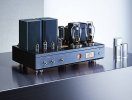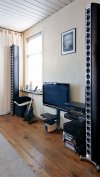H-713
Senior Member
- Joined
- Jan 24, 2021
- Messages
- 379
- Likes
- 666
In absolutely no way do I have any loyalty to Topping, nor do I own any of their products (and don't intend to), but even still I will admit that the PA5 delivers extremely good performance, beating out most of the linear amps from the last 40 years in terms of distortion.
Also, in response to the SPL discussions above, who cares? Amplifiers haven't been a limitation in this regard for over 30 years. IIRC, Crest released the 8001 in the mid to late 1980s, and by the 1990s they had things like the 9001 and 10001. Now it's even less of an issue. MC2's E45 will do 8400W bridged into 4 ohms, and Lab Gruppen has Class D amplifiers that claim to do 14 kW into 4 ohms. Oh, and the E45 is a linear topology. All of that in a 2U enclosure.
And if you need MORE power? Then AE Techron has you covered. Really, amplifier power is not the limitation and it hasn't been for decades.
If you really want to recreate 160 dB SPL in your living room (I can't imagine why you'd want to), you'll need to solve the transducer problem first.
Also, in response to the SPL discussions above, who cares? Amplifiers haven't been a limitation in this regard for over 30 years. IIRC, Crest released the 8001 in the mid to late 1980s, and by the 1990s they had things like the 9001 and 10001. Now it's even less of an issue. MC2's E45 will do 8400W bridged into 4 ohms, and Lab Gruppen has Class D amplifiers that claim to do 14 kW into 4 ohms. Oh, and the E45 is a linear topology. All of that in a 2U enclosure.
And if you need MORE power? Then AE Techron has you covered. Really, amplifier power is not the limitation and it hasn't been for decades.
If you really want to recreate 160 dB SPL in your living room (I can't imagine why you'd want to), you'll need to solve the transducer problem first.








